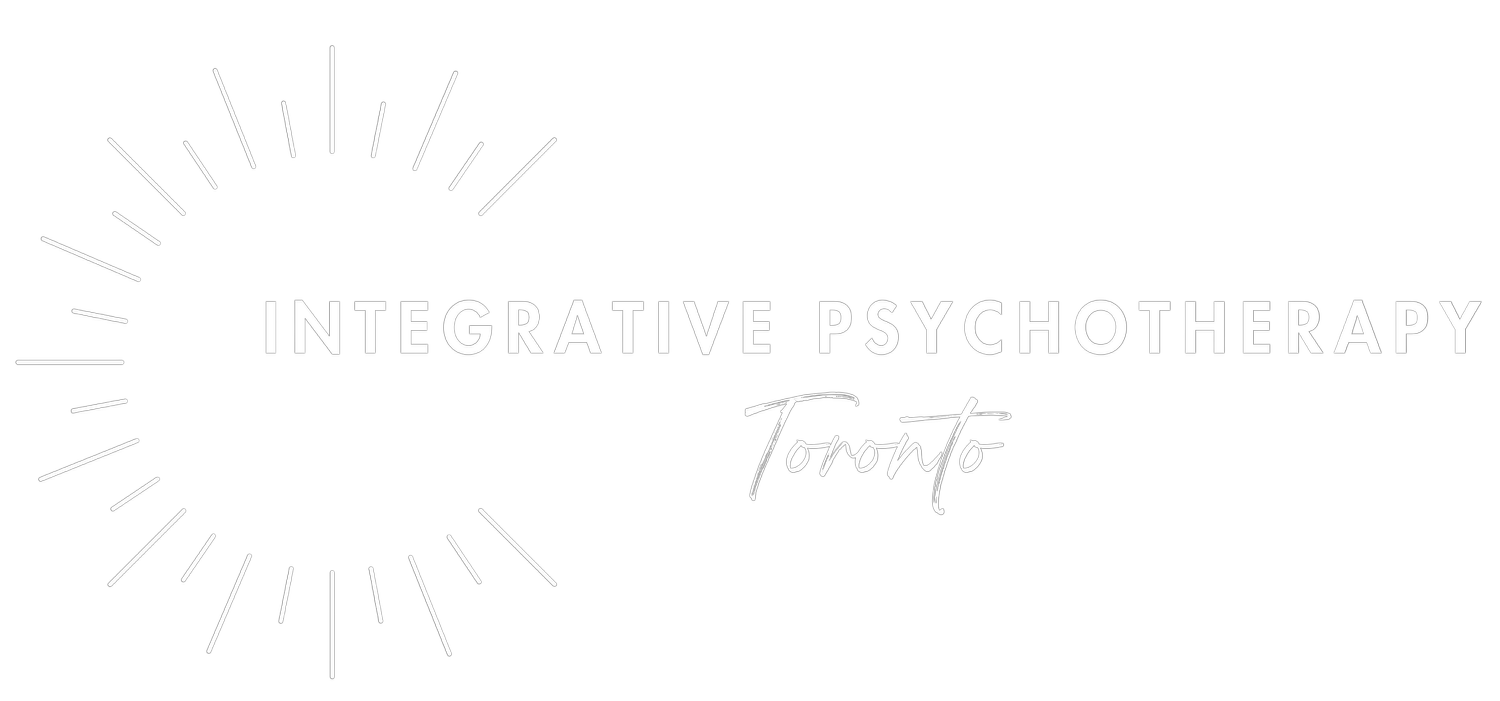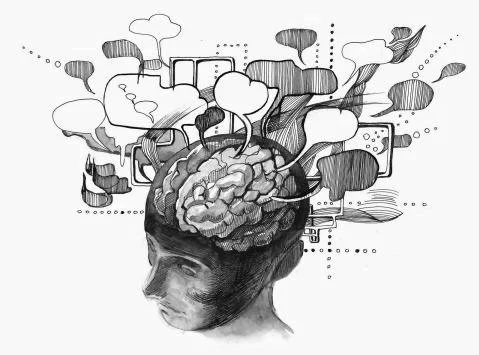why “talk therapy” may leave you hungry
Key points:
This is the blog version of my video Why "Talk" Therapy May Leave You Hungry. If you’re more of a tl;dr kind of person, you may prefer the video.
Different types of therapies work on different types of the brain, and are able to accomplish different things.
I’ve borrowed a whole bunch of other peoples’ brilliance and co-opted it to form a therapy model, which I’m currently referring to as the Sinek-MacLean-Siegel-Patton Model of Therapy.
Simon Sinek gave me the frame work, that there’s always a What, a How and a Why - What’s happening, How it’s happening and Why it’s happening
Paul MackLean and Dan Siegel gave me the neuroanatomy - that the brain can be divided into distinct processing centres that do different things.
These two maps can be imposed on each other, with What’s being held primarily in the upper areas of the brain, and How’s and Why’s being stored more often in the deeper centres of our brain
Therapies can then be mapped onto this, based on what level of the brain they effect, and therefore what level of the situation (the What, How and Why) they’re able to influence.
Traditional “talk” therapies primarily work on the upper brain and the What level, while experiential therapies work on the deeper levels of the brain, touching the How and the Why level.
The Conversation
This conversation came up with a client who I’ve been seeing for quite a while, and she always has a lot of say, but at one point she stopped mid sentence and said something along the lines of “I’m just so sick of hearing myself talk. I’m always talking about the same things, and I’m sick of it.”
Which led us to chatting about different types of therapy and how different types of therapy effect different parts of our brain.
The What, How & Why of the SMSP Model of Therapy
I’ve come up with a way of organizing this in my own mind, which borrows many other people’s brilliance and compiles it into something that makes sense to me.
I’m calling this the Sinek-MacLean-Siegel-Patton Model of Therapy. To be clear, I have not worked with Simon Sinek, Paul MacLean or Dan Siegel, and they may or may not want their names associated with this, but… We’ll pay tribute to them anyway. Until they ask me not to.
Simon Sinek had an amazing Ted Talk called Start With The Why, where he used this diagram to illustrate that there are always three things going on, there’s What you’re doing, How you’re doing it and Why you’re doing it.
Now, his Ted Talk was about seemingly about marketing, but don’t be fooled, it’s actually about so much more. This idea blew my mind when I first learned about it, and I’ve found it such an incredibly helpful organizing principle for so many things.
Including, therapy. This is how I case conceptualize - which is therapy speak for “how I make sense of my clients.”
When a client comes into therapy, most commonly they’re coming in with a What. There’s a behaviour or a pattern that’s distressing them - anxiety, depression, procrastination, difficulties with relationships - there’s What’s going on.
What’s are symptoms.
And that’s obviously a really important starting point, but it is a starting point. It’s the most superficial layer of the whole thing. It’s the tip of the iceberg or the smoke from a fire - it’s signalling something, but it’s not the full picture.
One layer deeper, there’s the How. How is this happening? What internal processes and dynamics give rise to What’s going on? What thoughts, beliefs, emotions, parts of Self are at play? What past experiences are being triggered?
How’s are processes.
And one layer deeper still, there’s the Why. Why is this happening? What function does is serve? Nature doesn’t do anything in vain. If it’s happening, it’s happening for a reason. What is it protecting? What is the feared consequence if that behaviour or pattern didn’t exist?
If What’s are the smoke, Why’s are the fire.
If What’s are the symptoms, Why’s are the root cause.
Why’s are the heart of the matter.
Why’s are usually hurts, injuries, wounds. Difficult experiences that haven’t been processed and healed.
So - What. How. Why. that’s the Sinek contribution to the SMSP Model of Therapy.
The Neurology of the SMSP Model of Therapy
On to Paul MacLean. Paul MacLean gave us the Triune Brain, which described three levels of the brain. These are the same three levels that Dan Siegel uses in his Hand Model of the brain
Frontal cortex = cognition
Limbic system = emotion
Basal ganglia = sensations
And we can actually map the What’s, How’s and Why’s on to the different levels of the brain.
What’s are often held in the highest areas of our brain. These are also the parts of our brain that are more often in conscious awareness, and this is the only part of our brain that is verbal, that has access to language. This is the realm of conscious, explicit memory.
How’s and Why’s are often held deeper in the brain, often outside of conscious awareness and are non verbal. This is the realm of unconscious, implicit memory.
So, our therapy map now includes 3 different layers of an experience (the What, the How and the Why), and 3 different processing centres in the brain (the frontal cortex, the limbic system, and the basal ganglia).
The Therapy of the SMSP Model of Therapy
We can start to add therapies onto this map based on what area of the brain they target and therefore what layer of experience they’re likely to impact.
Traditional “talk therapy" - where we are talking about what’s going on - is primarily an upper brain activity. We are verbally processing, and only small parts of our brain are verbal or deal in language and thoughts, so only those parts of our brain benefit from talk therapy. Because of this, talk therapy is usually working at the What level.
That’s not a dig at talk therapy. Talking about what’s going on can be incredibly valuable in building insight and understanding, both of which are therapeutic in their own right, and are almost always a prerequisite to exploring deeper levels.
On the other hand, experiential therapies, like Internal Family Systems, Ego State Therapy, Sensorimotor Psychotherapy, Somatic Experiencing and Deep Brain Reorienting, are touching progressively deeper and deeper levels of the brain, and therefore are more ideally suited to addressing the How’s and the Why’s - addressing the processes and the root cause.
I sometimes use the analogy of the menu and the meal to think about the difference between purely cognitive or talk therapies and experiential therapies.
If you’re hungry, and you go to a restaurant, and all you do is look at the menu before leaving, you’re still going to be hungry. The menu is helpful - it lets you know what’s available and what you might want to order - but it’s not going to fill you up. To address the hunger, you actually have to eat.
The menu is not the same as the meal.
And similarly, talking about the issue is not the same as healing the issue.
And a lot of times, to address psychological distress, you actually have to go into the experience. Just reading the menu, just talking about it, often isn’t enough.
So if we circle back to my client, who was sick of hearing herself talk, she was really expressing a frustration at just circling around the What’s. And when we mapped it out like this, she said “oh yes, and there’s a Why to that, too. I stay in the What’s because it’s easier than looking at the uncomfortable stuff underneath.” Which kudos to her, shows a lot of insight. And allowed us to then work with How and Why.
So, that’s the Sinek-MacLean-Patton Model of Therapy, and why hanging out too long in the What’s may leave you feeling hungry.







